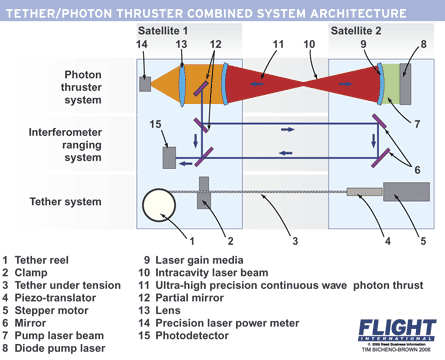By Rob Coppinger in London
Tether and photon thruster technology to enable clusters of micro, nano and pico satellites to fly in high-precision formations is being developed with a $750,000 NASA Institute for Advanced Concepts award.
The pulling action of Kevlar tethers and the push of photon thrusters will keep the satellites in formation. The tether is 4mm (0.173in) in diameter and as long as is needed, and is coiled onto reels mounted on the satellites at each end. Each satellite would have as many tethers as there are spacecraft to which it is connected in the formation.
Meanwhile, the satellites’ photon thrusters would amplify their 100µN thrust tens of thousands of times through a proprietary intracavity system for bouncing photons off mirrors between the spacecraft. Young Bae, founder of the California-based Bae Institute, has been given the NASA award. “[With this approach] the [station keeping] thrust power requirement for formations of 100kg [220lb] spacecraft...can be reduced to several watts per pair of satellites, well within today’s space power budgets,” he says.
 |
|---|
Source: Flight International




















